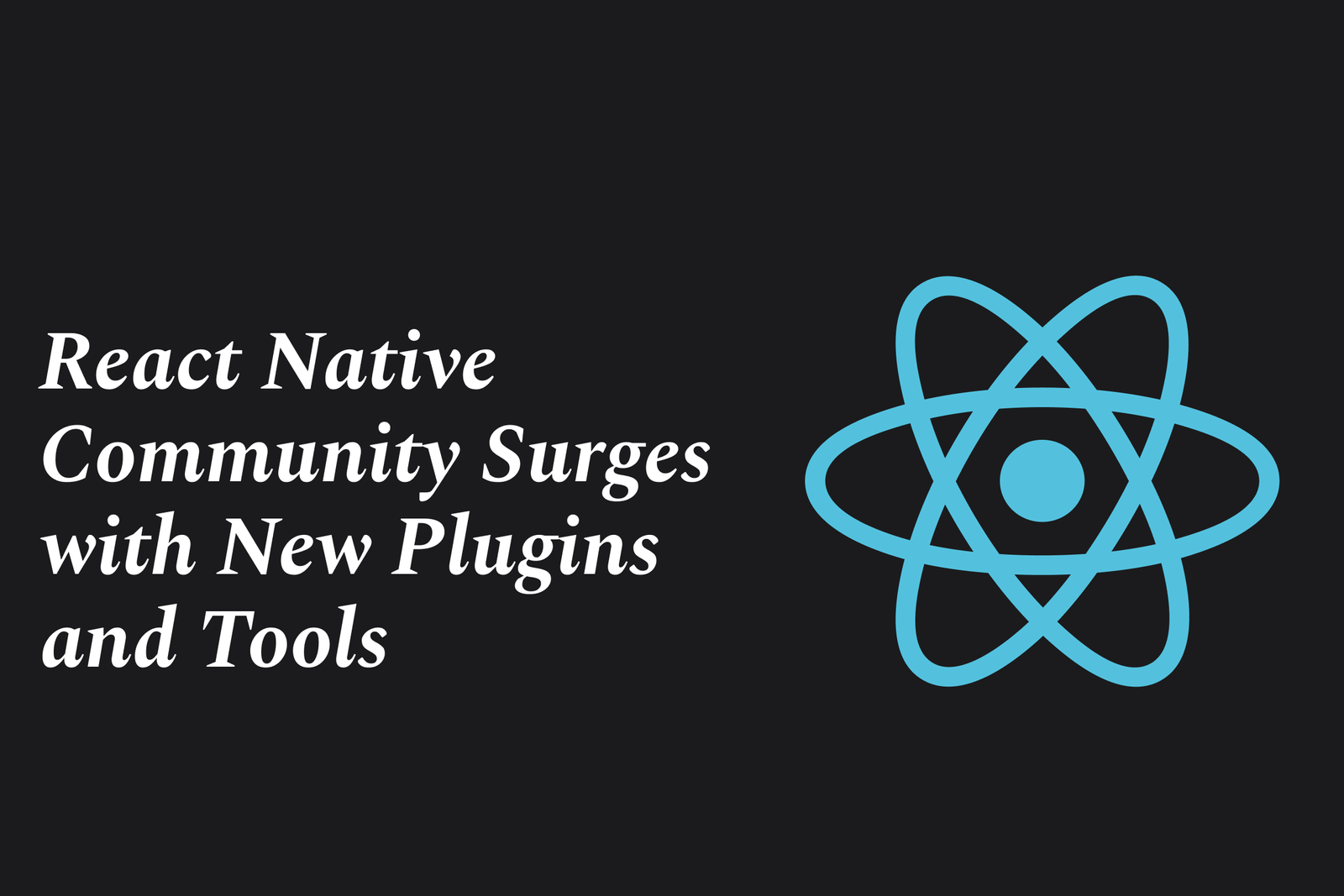React Native COMMUNITY Surges with New Plugins and Tools
The React Native community is rapidly expanding with a wave of new plugins and tools that boost app performance, simplify development, and enhance debugging. These innovations empower developers to build faster, smoother, and more feature-rich cross-platform apps than ever before.
React Native Community Surges with New Plugins and Tools
1 ) Introduction: Growth and Opportunities in 2025
React Native has significantly evolved since 2015, becoming a more powerful and efficient framework for cross platform app development.
The year 2025 marks a pivotal moment with enhanced architecture, improved tools, and broader industry adoption.
Major companies like Shopify, Microsoft, and Meta endorse React Native, highlighting its enterprise viability.
2 ) The New Architecture: Fabric and TurboModules
React Native's core architecture has undergone a major overhaul with two critical components:
Fabric: A faster and more flexible rendering system that enhances UI updates, delivering a native like, smooth, and efficient user experience.
TurboModules: Redesigned module loading that boosts app startup speed, reduces weight, and supports scalability.
Benefits include fewer performance bottlenecks, multi threaded rendering, smooth animations, and better support for advanced app features such as augmented reality and media heavy applications.
3 ) Enhanced Debugging Experience
React Native 2025 introduces upgraded developer tools facilitating easier, faster debugging.
Features include component tree inspection, prop analysis, breakpoints, and network monitoring.
Integration with tools like Reactotron, native iOS/Android dev tools, and Expo DevTool Plugins streamlines problem solving.
Debugging has shifted from a painful task to a seamless part of app development.
4 ) Expo's Evolution: Simplifying React Native Development
Expo has matured to become the recommended platform for React Native development.
Key advantages:
Eliminates complex setup, enabling developers to start coding quickly without native module headaches.
EAS Build and Submit simplify building and deploying production ready apps to app stores.
Supports custom native modules via the bare workflow and Prebuild.
Includes Expo Router for file based routing, easing transition for web developers.
Enterprise adoption of Expo demonstrates its robustness beyond being a mere stepping stone.
5 ) Conclusion: React Native's Bright Future
The React Native ecosystem is thriving with innovative plugins and tools that accelerate development and improve app quality.
The combination of the New Architecture, superior debugging tools, and Expo’s accessibility positions React Native as the leading framework for cross platform mobile development in 2025 and beyond.
For developers hesitant to adopt, this is the optimal time to leverage React Native’s advancements to build faster, smarter, and scalable apps.
https://justacademy.in/news-detail/android-app-modularization-trends
https://justacademy.in/news-detail/react-native-and-ai-integration-for-smarter-apps
https://justacademy.in/news-detail/flutter-+-gemini-ai-integration-tutorial
https://justacademy.in/news-detail/latest-android-camera-app-innovations
https://justacademy.in/news-detail/android-malware-protection-improvements
Related Posts
In 2025, top Angular libraries offer modern, feature-rich components and tools for building dynamic web apps. From powerful data grids to low-code platforms like UI Bakery, these libraries enhance development speed, UI design, and scalability, making them essential for Angular developers.
Migrating from AngularJS to Angular 17 involves gradually upgrading your app by running both frameworks together using tools like ngUpgrade, rewriting components in TypeScript, and adopting Angular’s modern architecture to enhance performance, maintainability, and long-term support.
Angular state management tools help organize and handle app data efficiently, improving scalability and maintainability. Popular options include NgRx for robust, RxJS-based patterns, and newer Signal Store solutions that offer simpler, reactive approaches integrated tightly with Angular’s latest features.
RxJS in Angular empowers developers to manage asynchronous data streams with powerful operators like `forkJoin`, `combineLatest`, and `zip`. Mastering these key operators in 2025 is essential for building efficient, reactive applications that handle complex event sequences seamlessly.
Angular performance optimization in 2025 focuses on improving app speed and responsiveness by using techniques like OnPush change detection, lazy loading, efficient data caching, and AOT compilation. These practices reduce load times, enhance user experience, and ensure scalable, fast Angular applications.
In 2025, Angular remains preferred for large-scale, enterprise apps with its robust, all-in-one framework, while Vue attracts developers seeking simplicity and fast development for smaller projects. Both frameworks excel, with choice driven by project needs and team expertise.
Angular Signals are a new reactive primitive in Angular 16 that enable fine-grained, efficient change detection by automatically tracking dependencies and updating only affected parts of the UI. They simplify state management and boost app performance, revolutionizing Angular's reactivity model.
Angular interview questions to prepare in 2025 focus on core concepts like components, directives, data binding, routing, and dependency injection, along with TypeScript mastery and latest Angular features to ensure strong practical knowledge for building scalable, efficient web applications.
AngularJS reached its official end of support in January 2022, meaning no further updates or security patches. To ensure app security and performance, developers should consider migrating to modern Angular versions or seek third-party long-term support options if immediate migration isn’t possible.
The Angular Roadmap 2025 highlights upcoming features focused on improving developer experience and performance, including zoneless Angular, Signals integration, enhanced Forms, async data handling, improved HMR, and expanded Angular Material/CDK enhancements, driving modern, efficient web app development.










